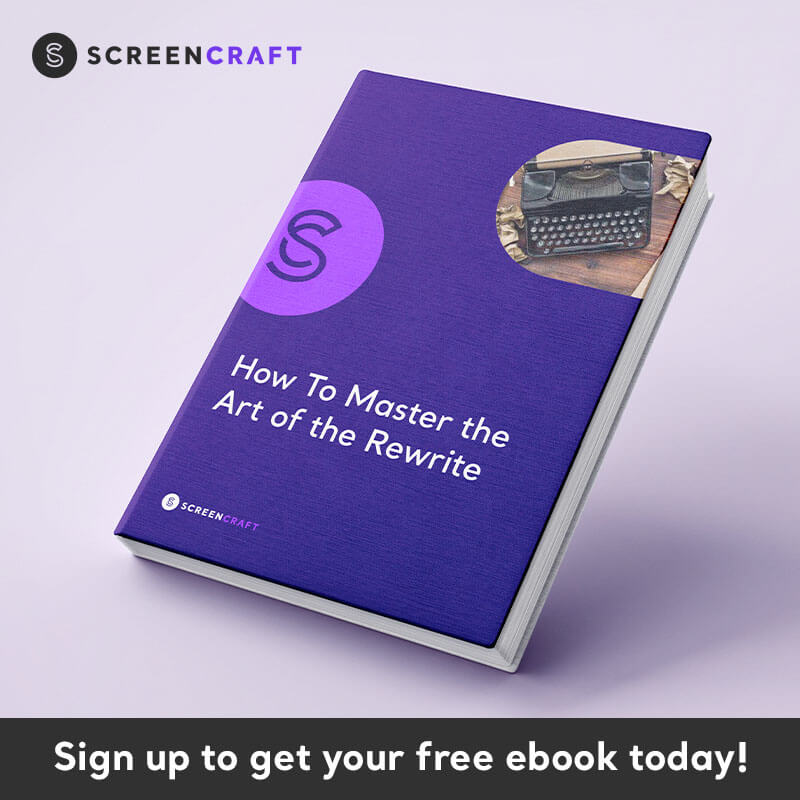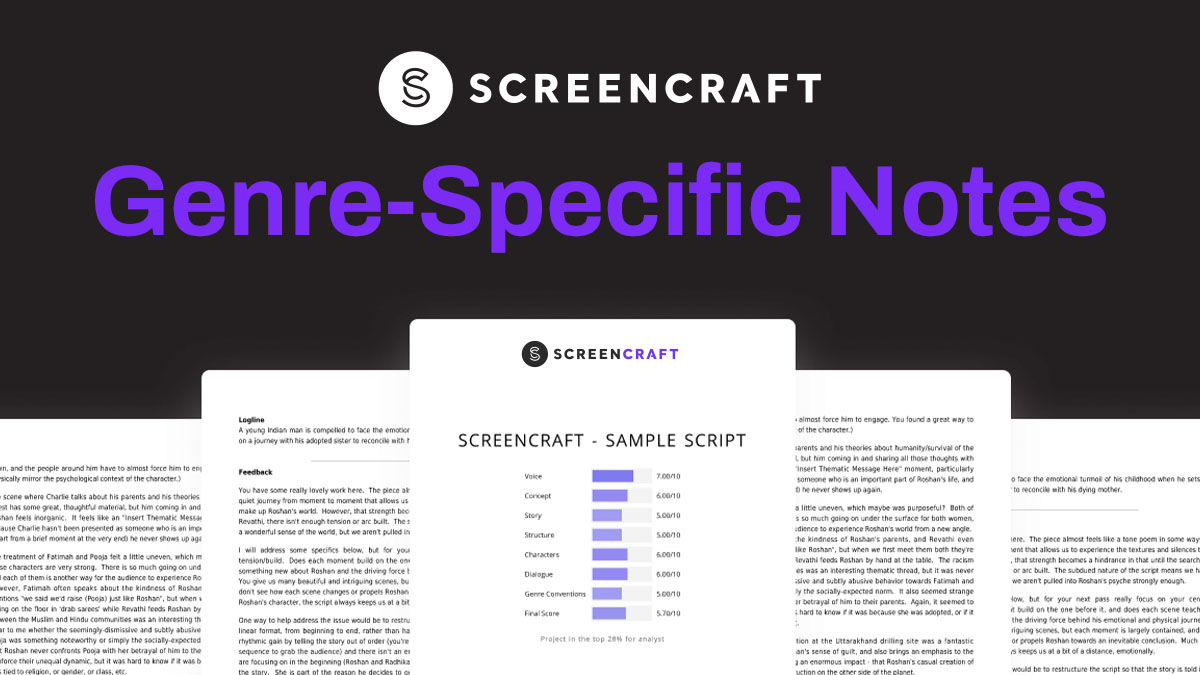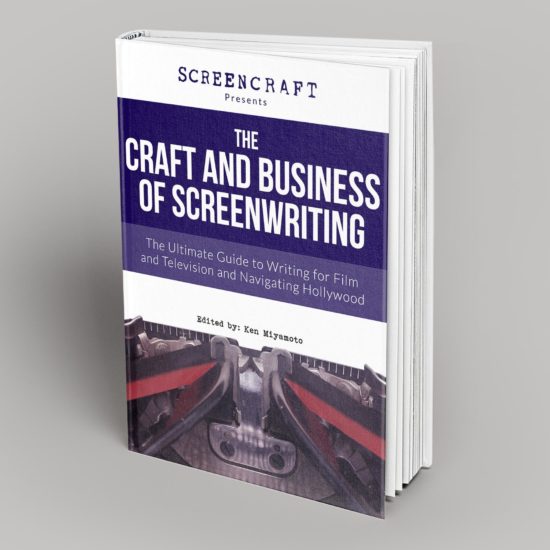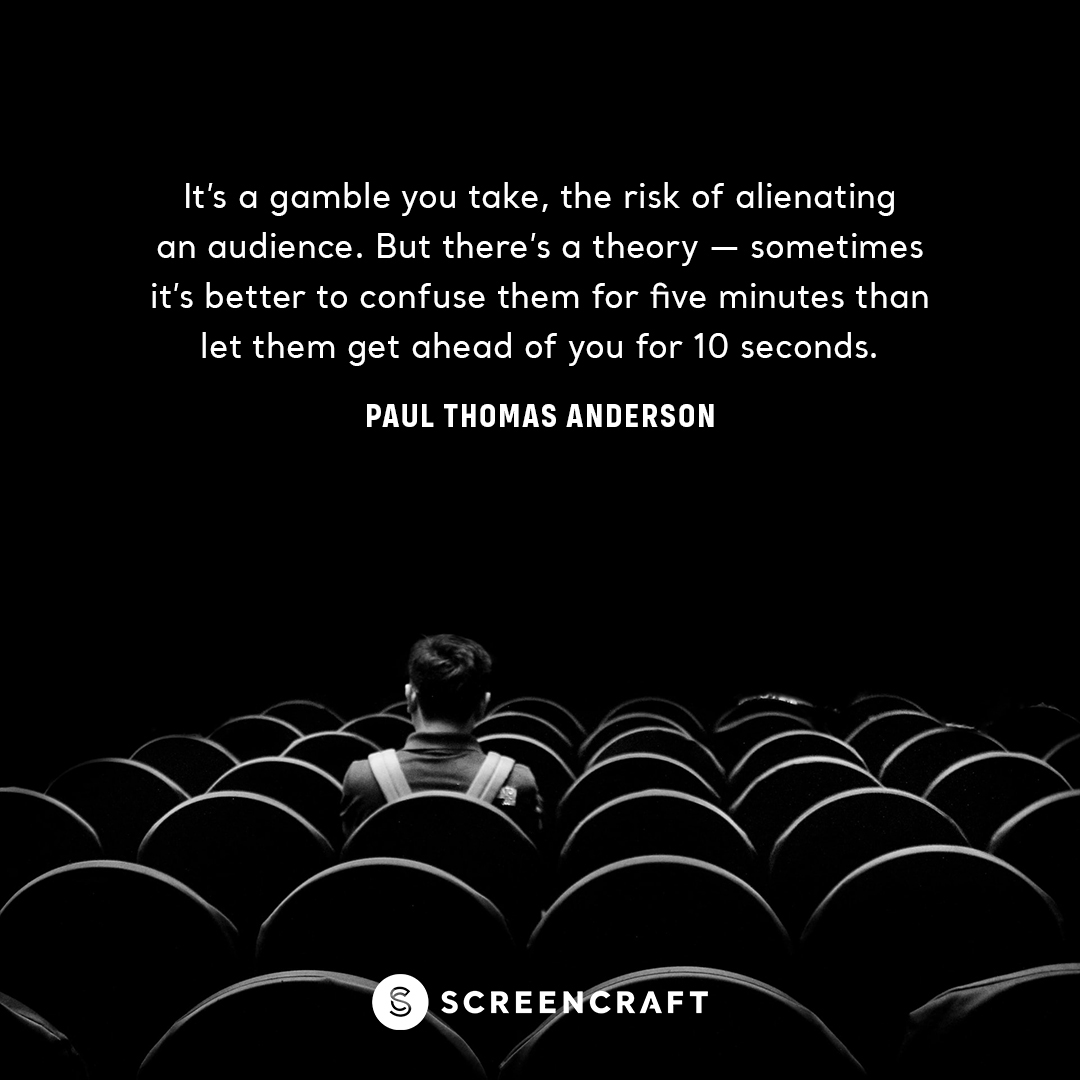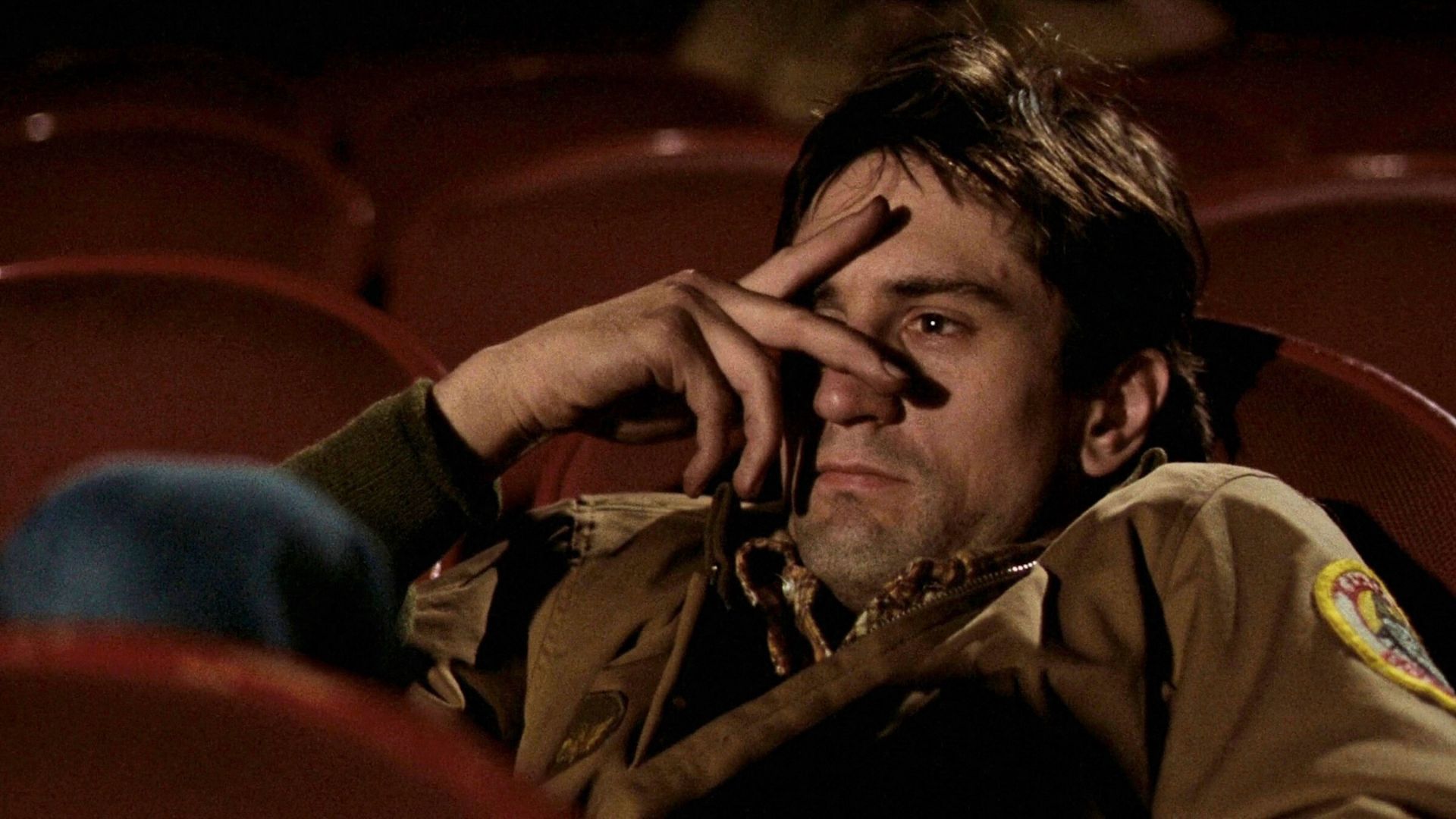4 Keys to Help Screenwriters Write Page-Turners

There are great scripts with amazing stories and characters, and then there are page-turners — the coveted type of script that every script reader yearns to get their hands on.
What is a page-turner?
Page-turners don't simply apply to how fast the read is; instead, it's really about the experience of the read itself as a whole. It encompasses the concept, the delivery of that concept, and the aesthetics of the script at hand.
Below are four keys to creating a page-turner, thus engaging a script reader from the beginning, through the middle, and right to the end.
1. Have a Great Concept
Either something original or a new take on something familiar, which is what studios and major producers love because they know an audience already exists for it. Choosing your concept is EVERYTHING. It’s the first element that is introduced in your script, and it’s usually the first element that is seen even before that reader opens it up — the logline.
While small, quirky character studies in comedy or drama are great, they aren’t compelling concepts overall. They won’t set that tone for the reader from the get-go that says, “I want to see how this script delivers on that amazing concept.” That’s what screenwriters need to offer in spec scripts. Engage, entice, and outright tease that reader with a great concept. A high- concept script is far more valuable than a brilliantly written low-concept character piece and a brilliantly written high-concept script is gold.
2. Focus on the Aesthetics of the Script
The aesthetics of the script are perhaps the most overlooked aspect of screenwriting, as screenwriters usually have a full focus solely on the story, characters, etc.
You see, reading a script should be an experience. It’s not just about reading words and processing them. It’s about creating an experience. And for script readers, there’s no worse experience than reading an overwritten script.
Scene descriptions should be short, sweet, and to the point. The broad strokes. For each block of description, strive to keep it to no more than two lines. If you have more, break it up by spacing the blocks out into different and shorter blocks.
That’s often advice most screenwriters have read about since day one of their journeys, but let’s delve deeper and understand why that is so important.
Think of it this way — each block of scene description is a visual you are trying to convey. And you need to convey it as quickly as possible for the reader to be able to see it through their mind's eye.
Each block of scene description is you throwing out visuals to them:
This is what I want you to see.
Now you see this.
Now this happens.
There's a beat to it, you see? When you have long paragraphs of scene description, the reader’s brain registers it differently despite it saying the same thing.
This is what I want you to see. Now you see this. Now this happens.
That registers so differently — especially when it's actually scene descriptions being written.
Think of it in a musical context, beat-wise. That first example where those three lines are separated creates a rhythm.
Boom Bada.
Boom Bada.
Boom.
There's a beat to it. The second example doesn't read like that, especially when there would be actual scene description.
It reads more like Boombadaboombadaboom.
You see the difference? Your mind just read that second example as more of a garbled sentence than a series of flowing beats. Your mind was forced to slow down, if not for a brief moment, to make sure that it was processing the letters correctly. That is how you lose script readers early on.
So, in short, make your scripts have a beat to them. Something a script reader can "tap their feet to."
And then apply the mantra of short, sweet, and to the point for every element of the script, including dialogue and even scenes themselves.
3. Keep Engaging the Reader Every Few Pages
Do not spend the first act introducing your characters. Let the reader discover your characters as they are catapulted into the concept.
Let the reader learn their motivations and arcs as they are bombarded by the conflict that you are hopefully throwing them into from the get-go. Let there be a mystery to it. Why show your whole hand when you can keep a reader invested and engaged by slowly peeling away the layers of the character as they deal with the conflict and overall concept?
So throw the reader and your characters into the script's concept early from those first few pages. They'll discover who those characters are along the way.
Then, you need to continue to build and build and build, whether it’s with the laughs, the drama, the screams, the mystery, the thrills, the action, etc.
Offer as many twists and turns as you can. Lead that reader towards something, only to pull the rug out from underneath them just when they feel that they know where you’re going with it.
One of the greatest and most undersung examples of this is the Paul Haggis thriller The Next Three Days, starring Russell Crowe.
If you watch the trailer, you think you know what to expect, which probably was the reason why few people showed up in theaters to watch it.
However, almost every single predictable setup in the film leads you somewhere you’d never thought they’d go. The script pulls you back and forth, back and forth, to the point where you feel this anxiety building as you want — no, need — to know what is going to be revealed next.
That is what keeps the script reader engaged, invested, turning the page quickly, and wanting more, more, and more.
4. Write With the Mindset of a Film Editor
Now, this is much different than writing like a director, which is what you don’t want to do as far as including every major camera angle, camera direction, etc. Those are to be kept for auteurs like Quentin Tarantino and Paul Thomas Anderson. They direct their own scripts, so they'll write in their own languages, most of which represent a shooting script in the end. Screenwriters writing on spec, or even on assignment, need to avoid that at all costs.
Film editors are there to take what the director has shot and create an experience. One edit of a film can be drastically different than another edit, depending upon the tone, atmosphere, and style applied.
Screenwriters need to embrace that train of thought. Screenwriters should read whatever book on film editing that they can get their hands on if they want to learn how to write a page-turner because that’s really what it’s all about — writing like a film editor edits.
Just like scene description has a certain beat to it, so does each and every scene and sequence within a script.
Take a look at one of the most significant examples of movie introductions, The Big Chill. Here we have an ensemble cast of eight characters that find out that their college friend has committed suicide. Most scripts would tackle this pretty straightforwardly with a couple of pages or more for each character because it's a drama. Here, we’re given an opening that flows so much better with brief glimpses to their reaction to the news, intercut with their friend’s dead body being prepared for the funeral.
That’s how screenwriters should write. That’s how you can create a page-turner that feels like a living, breathing film.
If you have a crucial sequence of scenes that are necessary to showcase at any given time, think like an editor and figure out how you can break up those scenes in the best of ways, jumping from location to location, from this character to that, etc. Intercut scenes. Go from one to the other, back and forth, rather than just offering a bland collection of scenes built up on top of each other. That’s not how most great films feel when we’re in the theater. Why? Because they’ve been edited to convey certain energy, flow, and style.
Write like an editor edits. Your scripts will be injected with an energy like no other.
The delivery is key. The read of your script, and thus the look and feel of it, will decide who reads the script and who doesn't.
If you think you can say, "Forget it, my story and characters will stand out no matter what and it's their loss if they can't read it thoroughly..." Well, you won't have a career in screenwriting. Plain and simple.
You need to write a page-turner. No matter what genre you're writing in. And your script needs to look the part as well because most script readers can simply take one look at a screenplay and the overall aesthetics of it, and know within less than a minute if it is going to be a terrible read or not. That's how good these script readers are because that is all they do for the most part. And they will be looking for any excuse to throw the script in the Pass file (Pass as in, "I Pass on it") and tackle the endless stack of unread scripts after it.
When a script reader reads a script, they need to be able to see that movie through their mind's eye as quickly as possible, with each turn of the page. That's what a page-turner does. It allows readers to basically watch the movie, rather than just reading a bunch of long scene descriptions, long dialogue exchanges, and long scenes.
Those are the secrets to writing a page-turner.
Find out what else script readers want with ScreenCraft's Top 5 Things Studio Script Readers Really Want.
Ken Miyamoto has worked in the film industry for nearly two decades, most notably as a studio liaison for Sony Studios and then as a script reader and story analyst for Sony Pictures.
He has many studio meetings under his belt as a produced screenwriter, meeting with the likes of Sony, Dreamworks, Universal, Disney, Warner Brothers, as well as many production and management companies. He has had a previous development deal with Lionsgate, as well as multiple writing assignments, including the produced miniseries Blackout, starring Anne Heche, Sean Patrick Flanery, Billy Zane, James Brolin, Haylie Duff, Brian Bloom, Eric La Salle, and Bruce Boxleitner. Follow Ken on Twitter @KenMovies
For all the latest ScreenCraft news and updates, follow us on Twitter, Facebook, and Instagram.
Tags
Get Our Screenwriting Newsletter!
Get weekly writing inspiration delivered to your inbox - including industry news, popular articles, and more!


